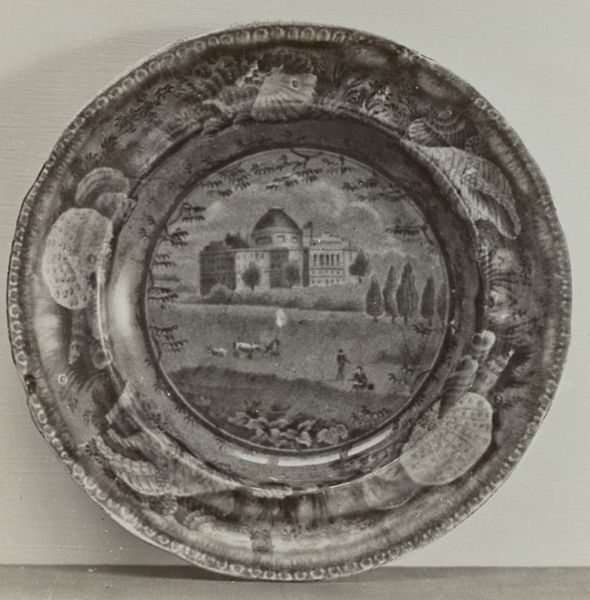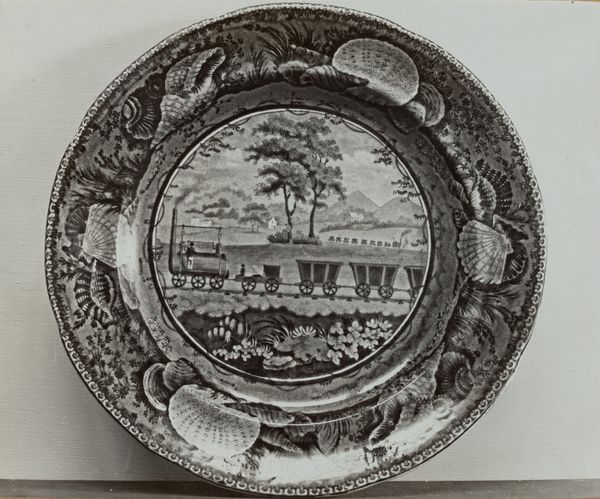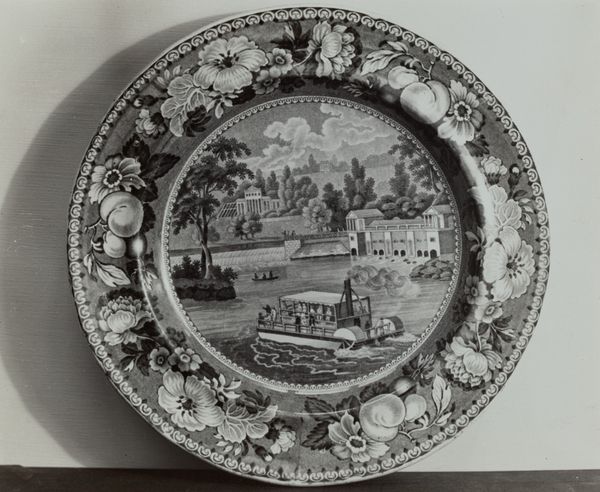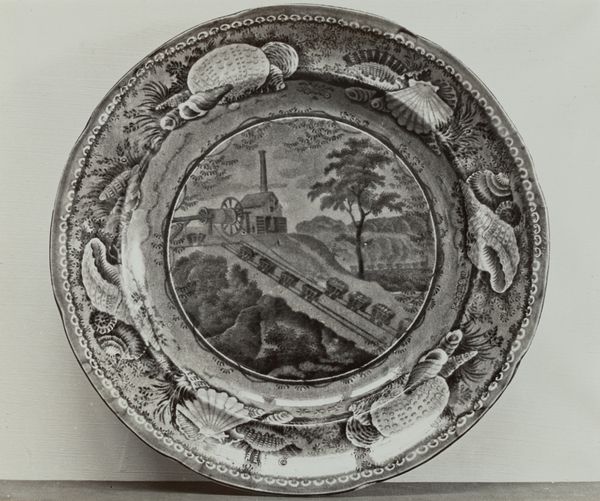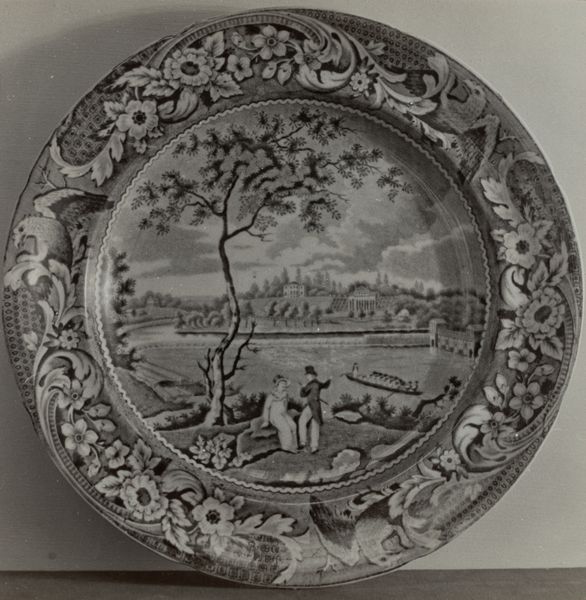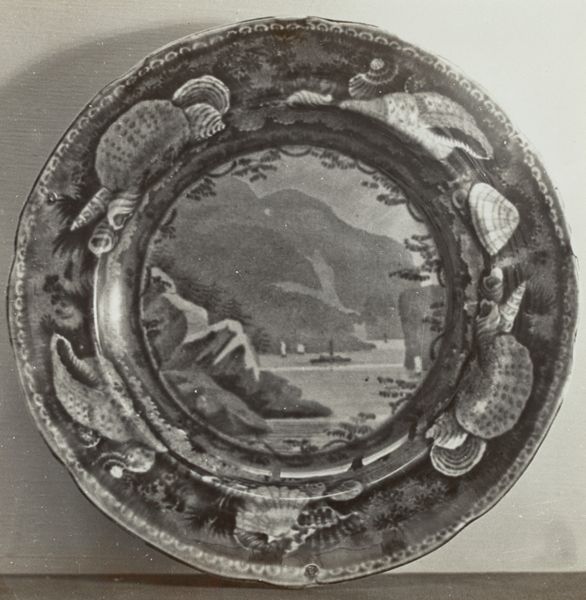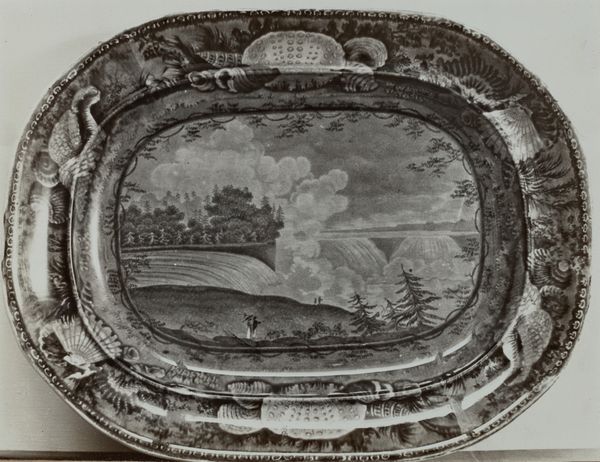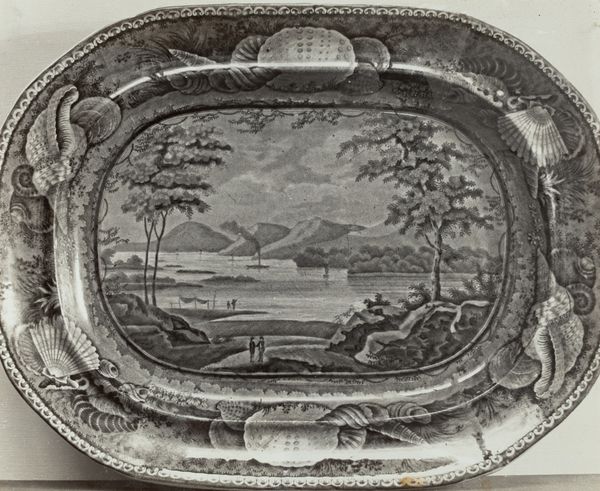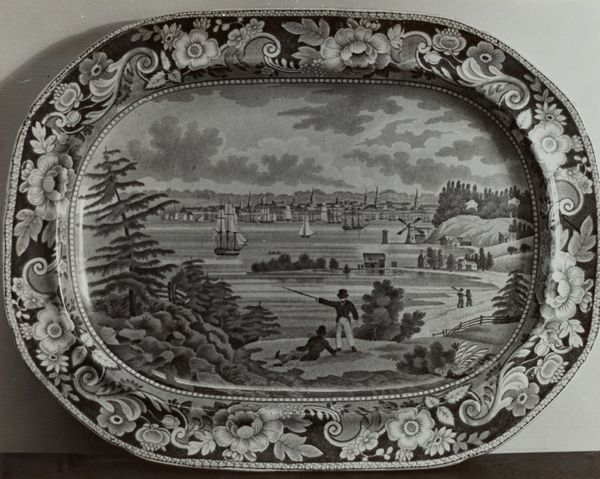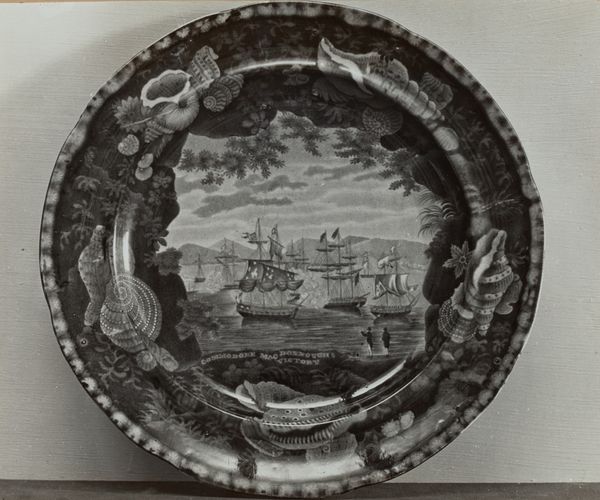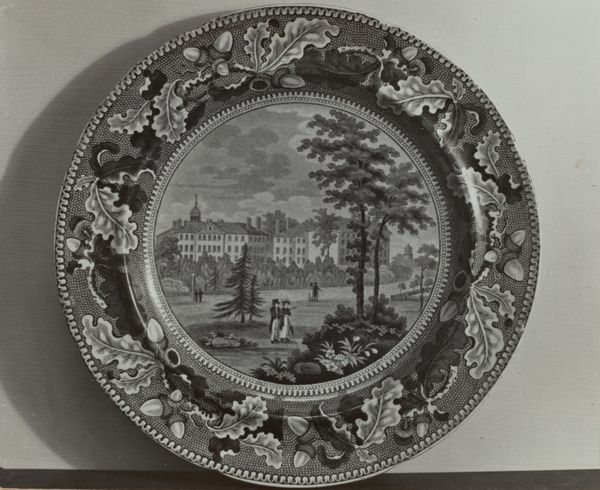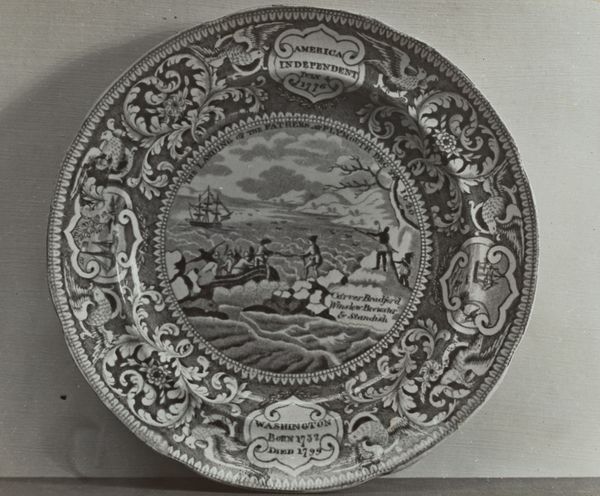
drawing, print, ceramic
#
drawing
# print
#
sculpture
#
landscape
#
ceramic
#
genre-painting
#
decorative-art
Dimensions: overall: 20.3 x 25.4 cm (8 x 10 in.) Original IAD Object: 10 1/3" in diameter
Copyright: National Gallery of Art: CC0 1.0
Curator: This plate, titled "Albany, NY," dates back to around 1936. It’s a fascinating example of decorative ceramic art. The piece layers drawing and print elements over the ceramic base. What's your initial reaction? Editor: My first thought is that the contrasting vignettes create a striking juxtaposition, that city versus country! The pastoral scene in the foreground really emphasizes a sort of idyllic version of upstate New York. Curator: Right! Looking closely, you notice that the central image depicting the Albany skyline isn't simply painted on. It was transfer-printed, likely through a process called transferware, that allowed for the mass production of these detailed images on ceramics. We often overlook these as just simple tableware, yet so much labor is involved. Editor: Absolutely. We often forget the class dynamics involved with who can access these landscapes, whether through owning dinnerware, or literally owning the land. It reminds me of a certain colonial attitude, where nature exists to be gazed upon and controlled. How do the materials affect the messaging? Curator: Well, the use of ceramic—earthenware fired at a specific temperature—speaks to the functionality of the object. Its intended for use, probably daily! Contrast the everyday materiality to its design referencing Albany's buildings as well as images that suggest access to wealth in the form of ships or livestock and it reflects how social values are circulated in a quotidian setting. Editor: And think about that choice of landscape for a domestic object—a sort of accessible, miniature status symbol that circulates ideas of the region's significance, but also ownership. I keep coming back to those two grazing cows—do they represent wealth, prosperity, or simply another feature to be consumed by the rising population? Curator: I see your point. The commodification of rural life for an urban audience becomes strikingly clear. By bringing rural scenery to the city dweller’s table it presents us a nostalgic, but perhaps problematic vision. We consume the very idea of landscape. Editor: That perspective reframes my understanding—instead of just admiring the beauty, I'm forced to consider whose history and perspective this plate promotes. The materiality isn't innocent; it carries layers of economic, and maybe environmental impact! Curator: Indeed. This simple plate encourages us to investigate the production process, our role as consumers, and also question idealized views. The object encourages us to evaluate material reality beyond its obvious aesthetics. Editor: It certainly challenges me to reflect on what it represents symbolically and practically, who it speaks for, and the impact of each carefully planned visual cue.
Comments
No comments
Be the first to comment and join the conversation on the ultimate creative platform.
